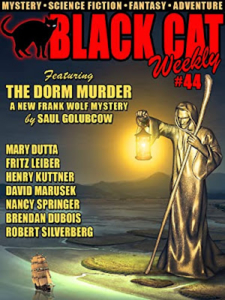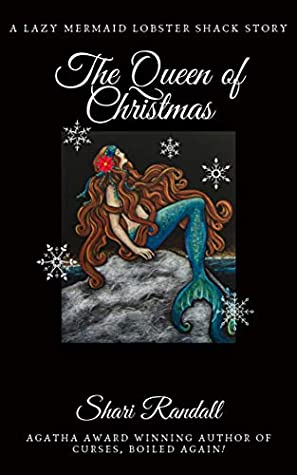Sisters in Crime’s Guppy Chapter Releases its Seventh Anthology
by Paula Gail Benson
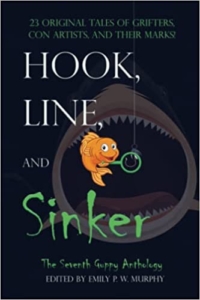
The anthologies organized and published by the online Guppy Chapter of Sisters in Crime have had an enduring influence in nurturing both new and established authors and in encouraging more readers and writers of short stories. The recently released Hook, Line, and Sinker (organized by Debra H. Goldstein and Carol L. Wright) is the seventh in the series and features twenty-three stories. Emily P.W. Murphy is the anthology editor and cover designer.
An invaluable part of appearing in a Guppy anthology is working with the organizers and other authors on promotions. Following are the descriptions provided by the contributors for their stories in Hook, Line, and Sinker.
Now available in Kindle and Paperback, why not add Hook, Line, and Sinker to your “to be read” list?
Sandra Benson – “Manual for Success”
Pharoahs were not the only ones buried by pyramid schemes. Krystal Markham plans to make money – or at least replace the money she took—by selling coffin franchises for EverRest. Using the manual for success EverRest provided, will she be able to? Or will her desperation lead her to bury something – or someone – else?
C.N. Buchholz – “Truth Be Told”
There are almost 100,000 psychics working in the US. How many of them would you trust? How many should you trust? This tale of sleight of hand, deception, and death will have you on the edge of your seat.
Lida Bushloper – “Senior Discount”
A remote spot in a parking lot. A vulnerable senior citizen (don’t call her that to her face!) with a broken-down car. A stranger approaches….if you think you know the rest, “Senior Discount” will give you a secret surprise.
Judith Carlough – “Man Up in the Air”
We’ve all heard about – or lived – a midlife crisis. We may think we know what will happen when Macon’s body meets Ashleigh, a beautiful flight attendant. Can he resist the temptation? A story that appears as sweet as carrot cake can have a very spicey bite!
Kait Carson – “Gutted, Filleted, and Fried”
Do you trust your spouse? Should you? Or, across the breakfast table do you think, there are plenty more fish in the sea? This tale of betrayal and surprise is cold enough to store fresh produce at Costco.
Susan Daly – “The Americanization of Jack MacKenzie”
A famous director said, “Film is a battleground.” In “The Americanization of Jack Mackenzie,” the battleground would appear to be Julie’s hometown of November Falls, Ontario, Canada. Yet, in this brilliant, twisting tale, the fight for preserving the town’s Canadian sweetness is mapped with devious strategy.
M.R. Dimond – “Playing It Again”
Detective Marie-Louise “Lou” Delacroix turns her investigative talents to a blackmail case involving a scandal, an inheritance, and some of New Orleans best beignets. Lou is smart, observant, and accustomed to navigating the ins and outs of New Orleans criminal underworld, but will she give up this important case to follow her lover to California? Or will the life and death stakes of the case keep her in the Big Easy?
Mary Dutta – “The Grift of the Magi”
Does the saying “lesser artists borrow, good artists steal” apply to the art of a good fraud? “The Grift of the Magi” takes the reader through a brilliantly twisting con where the reader is never sure who is the true owner of an Old Masters painting of the Adoration of the Magi and who is the master con artist crafting a beautiful portrait of a swindle.
Kate Fellowes – “The Buddy System”
Bennett is always the new kid in school. He tried to fit in, but it all felt pretty fake. He and the school bully Max are thrown together because neither have any friends. Will Bennett fit in with Max and his family? Or will it be another counterfeit experience?
Wrona Gall – “Capone’s Chair”
Nona Ponticelli is looking forward to moving into Labella Active Living but first, she needs to empty her apartment of 50 years of Mikasa dishes and her antique furniture. But Chicago is full of gangsters who might take advantage of her. This story shows us that gray hair does not mean a feeble brain and, as Nona eats her chocolate creams, she’s got a plan in the works worthy of Capone himself.
Vinnie Hansen – “Perfect Partner”
Over 300 million people use dating apps like Perfect Partner. Who could resist new love that is literally in the palm of your hand? That’s what Maya thinks when she starts texting with Adam – a man as handsome as original sin. But is the dating app a clearinghouse where lonely hearts and sweetheart swindlers meet? In “Perfect Partner,” we are not sure – whose heart – or wallet – will be stolen.
Ann Michelle Harris – “Changeling”
Who can resist a needy child? That’s what Shane is counting on when she takes another woman’s toddler out to test the limits of that question. This uncompromising tale of grifting will have the reader spellbound.
Kim Keeline – “Occupied With Death”
Nilda Santos does not like to be called the Death Doula, but that’s what she is. With poise and practice, she helps people prepare to die. But when a missing heir shows up at Eduardo Calvera’s funeral, possibly disinheriting his nephew, Nilda feels compelled to ask questions. As she investigates, Nilda finds secrets hidden in Eduardo’s retirement home that surprise even the Death Doula.
Jane Limprecht – “Net Profit and Loss”
Vacationing retirees Maggie and Ben Springfield encounter two internet entrepreneurs in a beachside Florida bar on a sunny afternoon: one runs an online loan modification company, the other operates an internet publishing business. Later, over tacos on their timeshare balcony, the vacationers contemplate whether their new acquaintances are dodgy scammers bent on fraud. Read this lighthearted tale to discover what Maggie and Ben do next.
Sally Milliken – “Trailblazer”
Brie’s life seems to be a series of Mondays, focused on work and trying to climb the corporate ladder. A friend encourages her to try online dating after Brie realizes that if she feels she’s peaked she needs to find a new mountain. When she meets Flynn, an experienced hiker, she’s ready to track him along a surprising new trail of deceit.
M.A. Monnin – “Just Another Shot in the Dark”
Raymond knows the success of any scam hinges on the savviness of the mark. He learned that from his father. Now Dad wants a brand new walker, which he can get with Seth’s new con, which promises to be more than just a shot in the dark.
A.W. Powers – “Restitution”
Is it nonsense or a sixth sense? That’s what parapsychologist John Thompson is trying to find out when he visits Madame Varna. Can Madame Varna truly channel the spirit of John’s sister? Or will a different ghost from the past make an unexpected appearance at the séance? This story will leave you breathless!
Merrilee Robson – “The Ass-In”
Did you ever just have one of those days? Wally sure is having one. Money goes missing. Police show up. There’s a fall from the second story. Maybe there’s someone smoking something they should not. But everything might have been all right for Wally, if not for the damn dog!
KM Rockwood – “Dear Lathea”
Sweetheart swindling can be a lucrative business, just ask Roderick, dear Lathea Markowitz’s long-time partner. Even though Ginger, Lathea’s cat, does not care for him, Roderick lives in Lathea’s home, and remains lovingly available to take the dear lady to fentanyl-laced doctor’s appointments and will-altering lawyer’s office visits. Is all doomed for Lathea? Will Ginger end up at the pound after Lathea dies? Or, is it “pawsible” that Roderick might have a more “furmidible” enemy than he could ever imagine?
Lisa Anne Rothstein – “Catch and Release”
Amanda Wallingford has cheated death once. Her time in the tropical paradise of St. Hilaire was supposed to restore her spirits before death patiently called again. However, Amanda finds that, for all the island’s beauty, St. Hilaire hides many secrets. Could one of them be that death has followed her? This taut thriller will make you suspicious of your next plate of sushi!
Steve Shrott – “Crime and Convenience”
It’s an ordinary convenience store with some extraordinary characters. “Crime and Convenience” disturbs the surface of your daily coffee run in a way that you will never forget.
Frances Stratford – “Wise Enough to Play the Fool”
July 28, 1540 was a busy day at Henry VIII’s court. That morning he married his fifth wife. Before his midday meal, Henry VIII sent the architect of his fourth marriage, Chancellor Thomas Cromwell, to death in the Tower of London. Yet many voices in the Tudor court worked to save Cromwell from the headsman’s axe, reminding the king that Cromwell was the king’s most faithful servant. So who was the cloaked figure who stole into the palace under cover of darkness and convinced Henry VIII to execute his most capable minister?
Shannon Taft – “Research”
Becca is a psychic and fraud from East Nowheresville. She and her dog Nostradamus have an established rapport that, along with Becca’s ability to research people’s deepest secrets, puts clients at ease. But when Becca unexpectedly finds one of her marks dead, she becomes a murder suspect. Will her skills as a researcher help expose who was the real fraud?


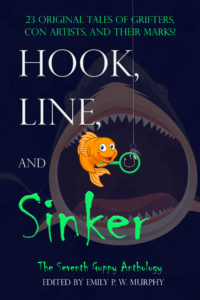 Reeled in by the Hook, Line, and Sinker short story anthology by Debra H. Goldstein
Reeled in by the Hook, Line, and Sinker short story anthology by Debra H. Goldstein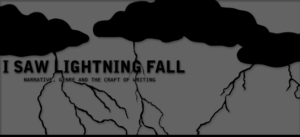
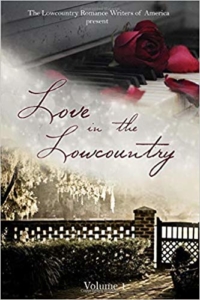 A few years ago, I thought about discontinuing my LRWA membership because I had joined several Sisters in Crime chapters and had become involved with the Mystery Writers of America and its regional Southeast chapter (SEMWA). Then, LRWA offered its members the opportunity to have their short stories published in a chapter anthology. I had been writing short stories and felt like I would like to try my hand at romance, so I continued to belong to the chapter. To be accepted for the anthology, each story had to take place during the winter holidays (Thanksgiving to New Years), take place in Charleston, go through two vigorous beta readings, and meet deadlines. In addition, each author had to develop promos to be used in social media. (I have always been impressed that romance writers know how to effectively sell their fiction!) The whole process was like boot camp and it was tremendously successful.
A few years ago, I thought about discontinuing my LRWA membership because I had joined several Sisters in Crime chapters and had become involved with the Mystery Writers of America and its regional Southeast chapter (SEMWA). Then, LRWA offered its members the opportunity to have their short stories published in a chapter anthology. I had been writing short stories and felt like I would like to try my hand at romance, so I continued to belong to the chapter. To be accepted for the anthology, each story had to take place during the winter holidays (Thanksgiving to New Years), take place in Charleston, go through two vigorous beta readings, and meet deadlines. In addition, each author had to develop promos to be used in social media. (I have always been impressed that romance writers know how to effectively sell their fiction!) The whole process was like boot camp and it was tremendously successful. 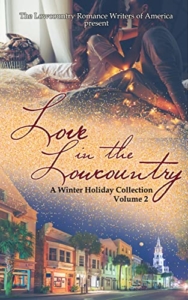
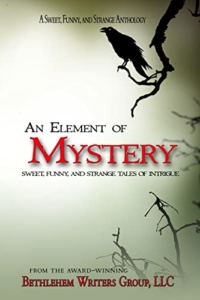
 Frank Wolf, survived the Holocaust with his daughter and resettled from Vienna, Austria, to New York City. In his earlier life, Frank was a scholar, but proof of his academic background was destroyed by Nazis. Unable to pursue a career as a professor, Frank became a security guard for a library. Then, eventually, he set up an office as a private detective.
Frank Wolf, survived the Holocaust with his daughter and resettled from Vienna, Austria, to New York City. In his earlier life, Frank was a scholar, but proof of his academic background was destroyed by Nazis. Unable to pursue a career as a professor, Frank became a security guard for a library. Then, eventually, he set up an office as a private detective.